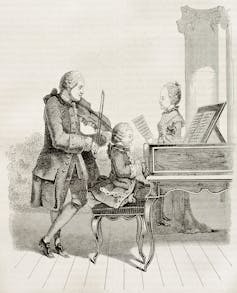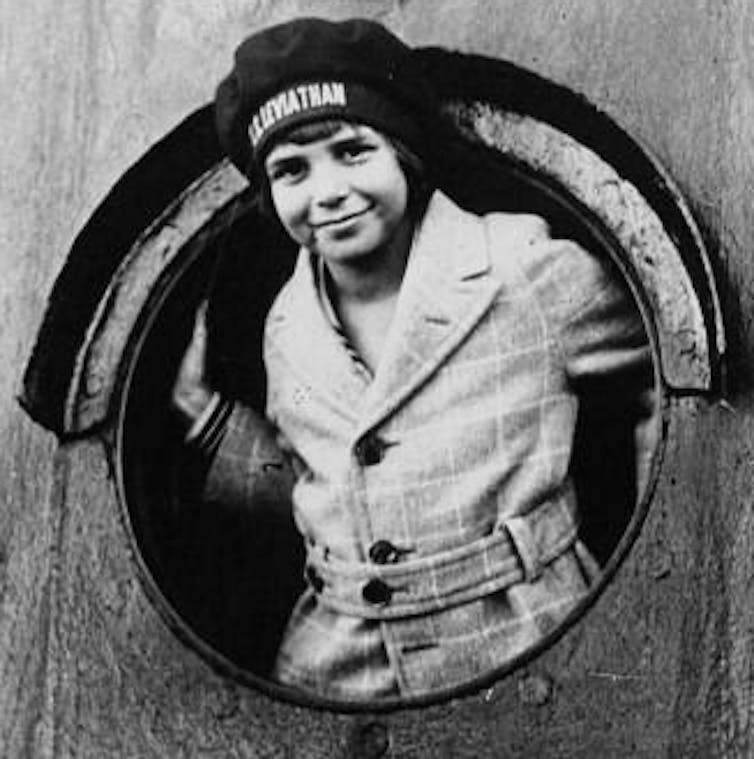Anyone who was paying attention to North American pop culture in the late 1990s and early 2000s will remember that it was a moment fascinated with childhood. The most mainstream entertainment revolved around idealized images of predominantly white children and young teens. From the appealing cast of the Harry Potter franchise to fresh faced pop princesses, and child characters in shows for young and old, idealized images of childhood were everywhere.
Many of those who performed the roles are now mature enough to make sense of having been children growing up in the public eye. It shouldn’t shock us that many of them had uncomfortable and even traumatic experiences. Adding to the intense drama of recent events in Britney Spears’s life, memoirs by Sarah Polley and Jennette McCurdy force us to confront why we love to see child stars, and what our appetite for cute white kids says about us.
Read more: Mickey Rooney was the child star who kept on working
The costs of stardom
The phenomenon of childhood stardom is hardly a new one. Scholar Jane O'Connor suggests that Jesus was the first child star; an apparently old soul in a tiny body whose ability to dazzle adults at a young age was a sign of things to come.
In the 1700s, Mozart and his sister Maria Anna spent much of their childhood on tour, performing adorableness and brilliance for audiences across Europe.

With the development of 20th century recording technology, child performers could be preserved on film and in sound, so that their charm is available to us forever.
The first real child star in Hollywood was Jackie Coogan, who starred in Charlie Chaplin’s 1921 silent film masterpiece The Kid. That performance launched a career that would make him an international star before he was 10. When he reached adulthood, however, he found that his mother and step-father had spent all of his earnings, and worse, that there was no law preventing them from having done so. Coogan sued, but he was only able to regain a fraction of his earnings.
California enacted Coogan’s Law in 1939 to protect the financial interests of children working in film. Many child stars since Coogan have been the primary breadwinners for their households, in a tricky inversion of family hierarchy.
At the dramatic climax of The Kid, five-year-old Jackie performed despair with a conviction that transformed expectations for what a child actor could do. But how could such a young child access such profound emotion on command? His father had coached him for the scene by threatening to leave him at a workhouse if he did not do well.
In an age and place where many children worked dangerous jobs and had lost fathers in the Great War, the danger of poverty and abandonment was vivid, even to a small boy. Coogan’s heart-rending performance has provided emotional catharsis to millions of viewers over the last century — the price was his own distress and fear.

Working children and the inner child
The ability to cry on cue remains “the skill you want in child acting,” according to Jennette McCurdy, who played a leading role in the Nickelodeon TV show iCarly. For most audiences, the magic of child performers is the way they compel us to access our own feelings and reconnect with our inner child.
The sound of a child’s voice singing a familiar song is powerful because it evokes the future and the past simultaneously. We remember our own childhoods and we can also imagine that the music and stories we love will go on into a new generation. The child’s performance can provoke moments of poignancy that help us retain — or regain — our sense of humanity.
Historian Carolyn Steedman argues that our cultural notion of “the self” came to take the form of a vulnerable child beginning in the 19th century. During that time, the use of children in dangerous labour conditions juxtaposed uncomfortably with new ways of considering children as fragile and precious. Child stars in entertainment work in better conditions than chimney sweeps, of course. Still, it is essential to recognize child stars as labourers, whose bright eyes, dimpled cheeks and sweet voices are the tools of their trade.
Our appetite for the power of cute shows no signs of waning, so it’s important to confront the cost of child stars. Must real children do this work for us? Are there ways for children to experience the excitement of performing without the dangers of stardom? Recent strategies for child actors indicate a positive shift. Australian animated show Bluey protects the identities of its child actors to allow them privacy alongside fame. This seems a healthy approach, but we won’t know for sure until those actors — and their child audiences — grow up and tell us.

